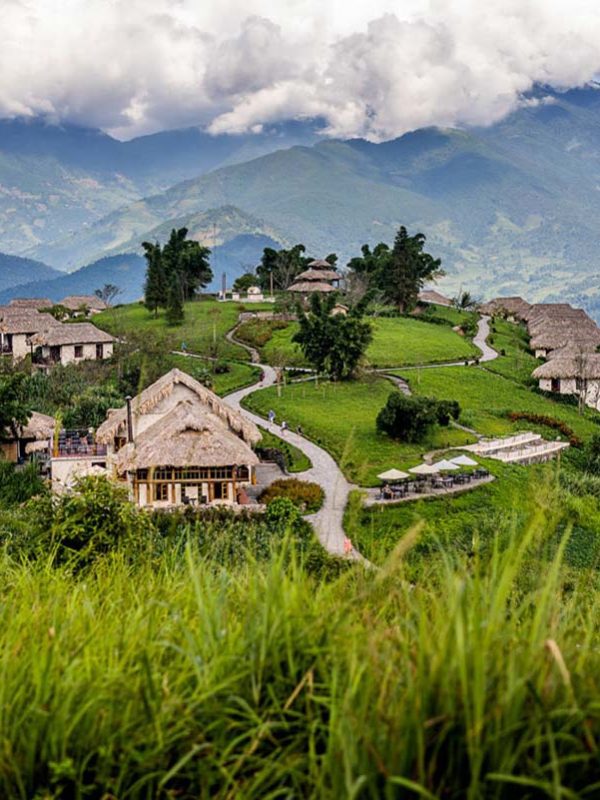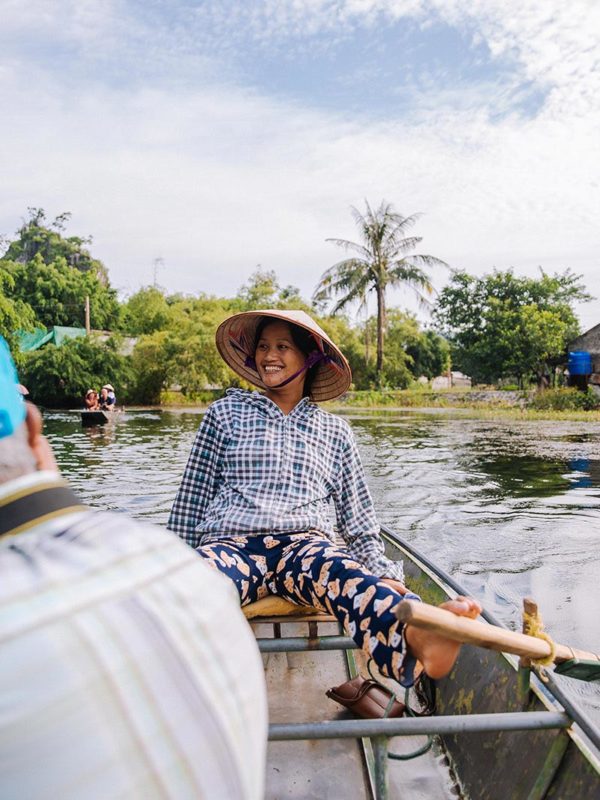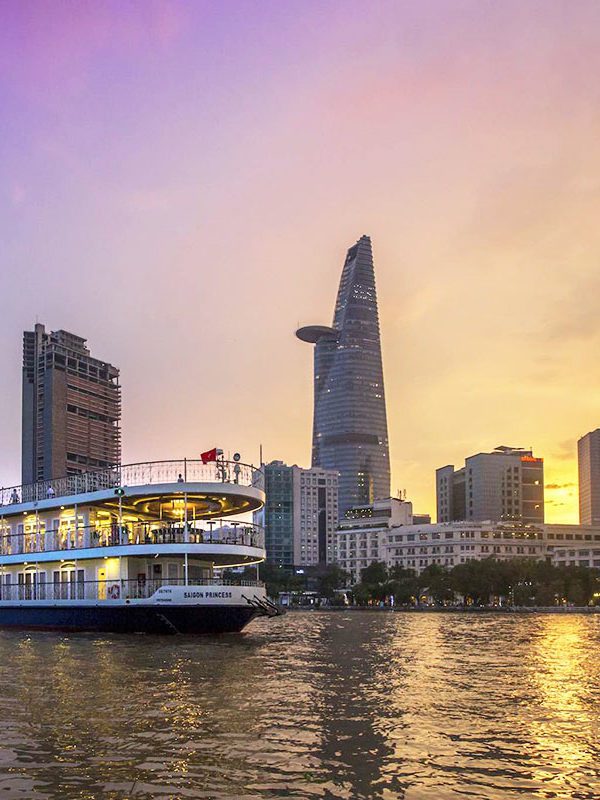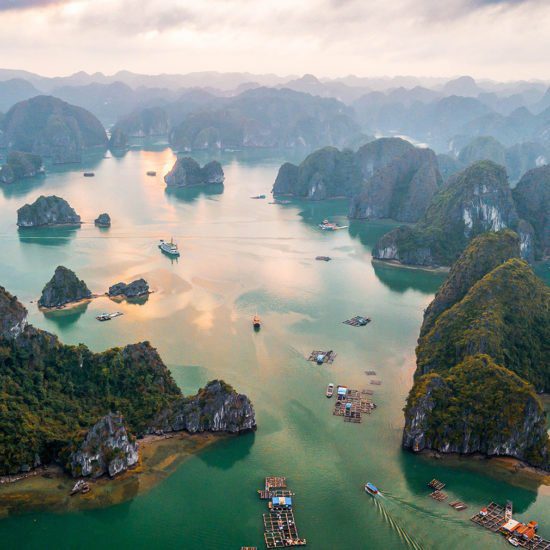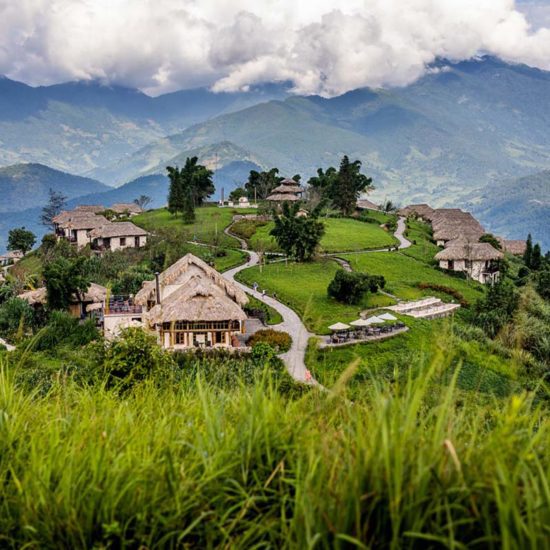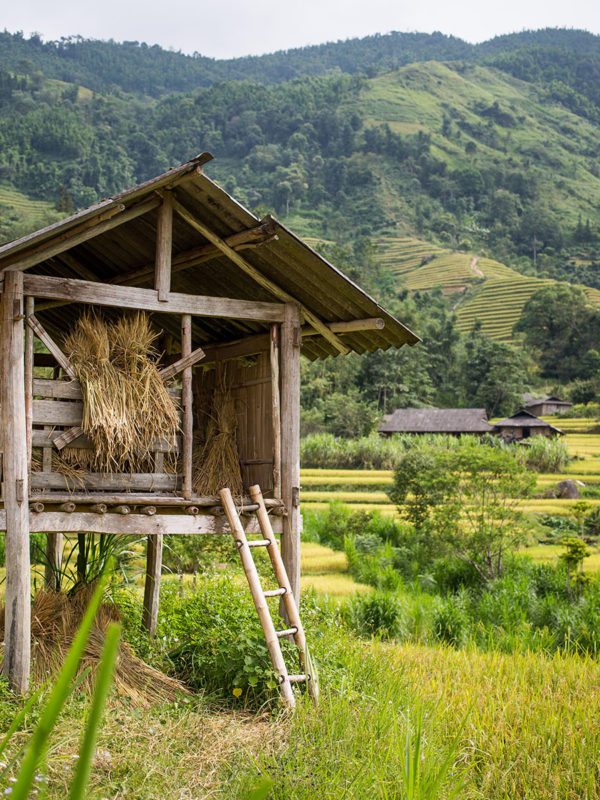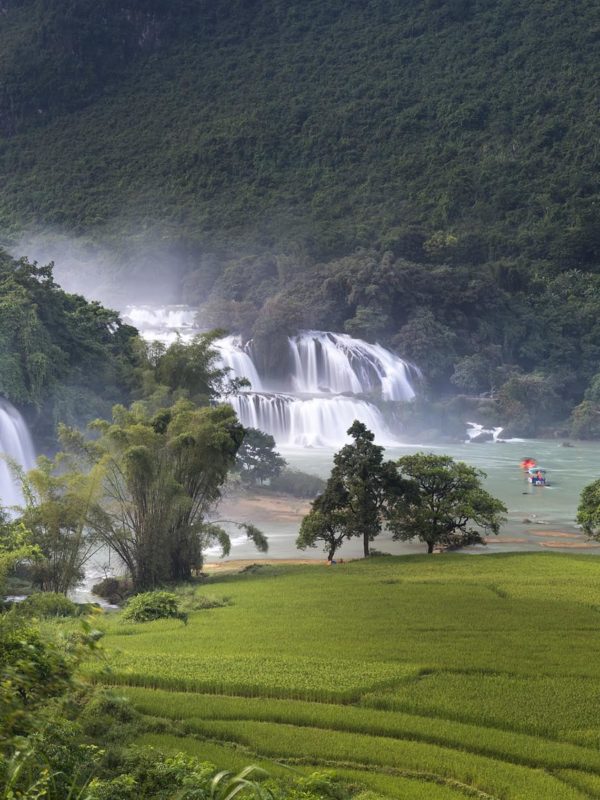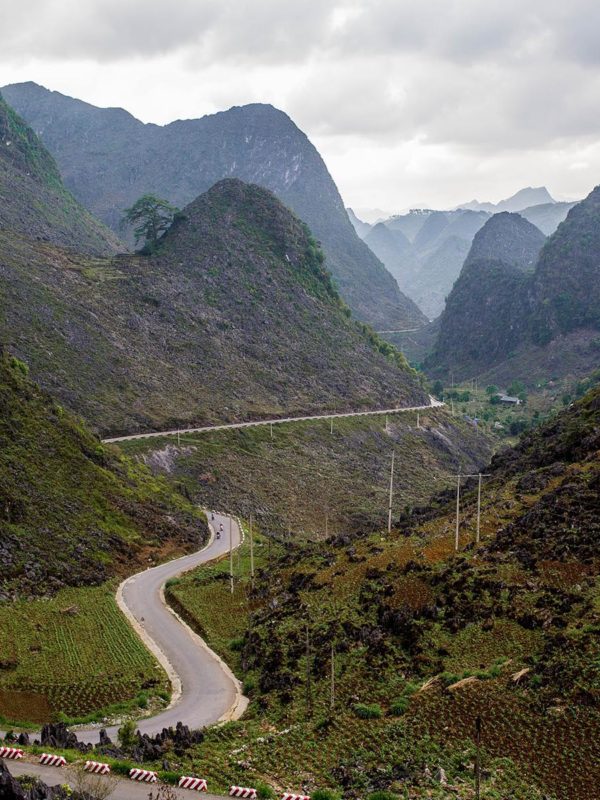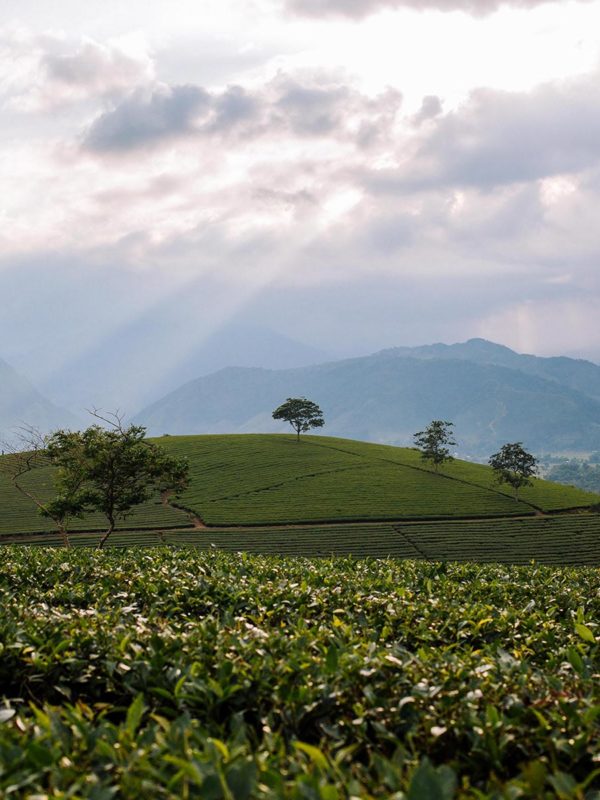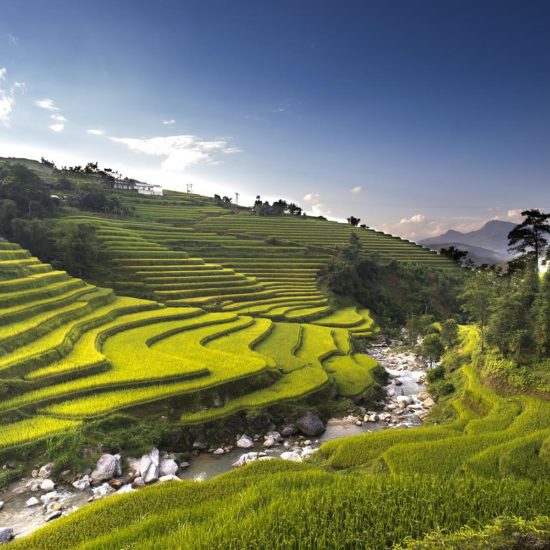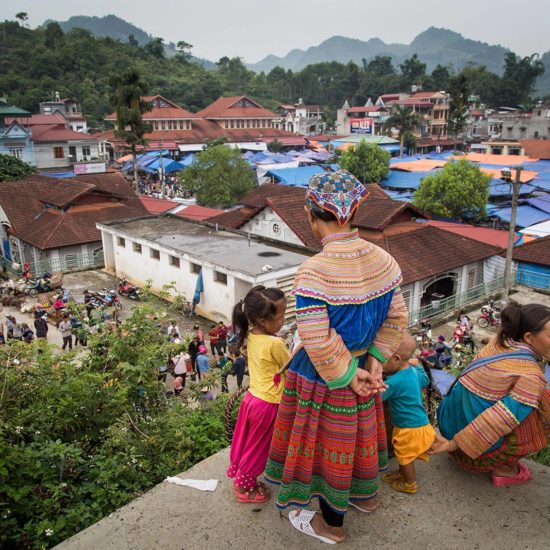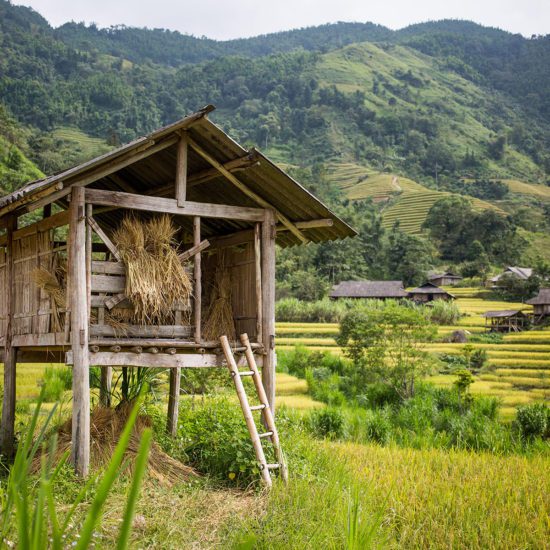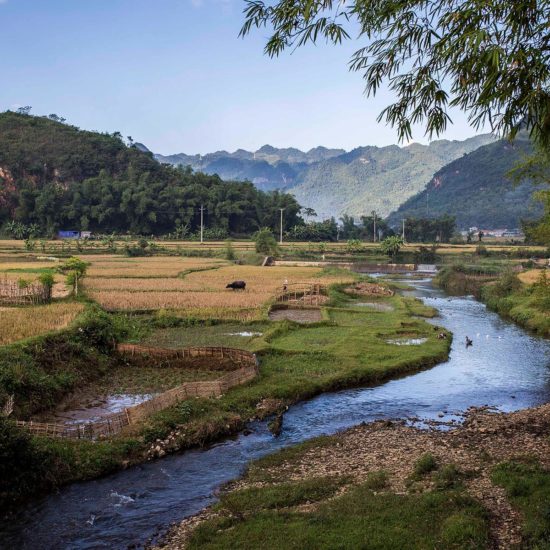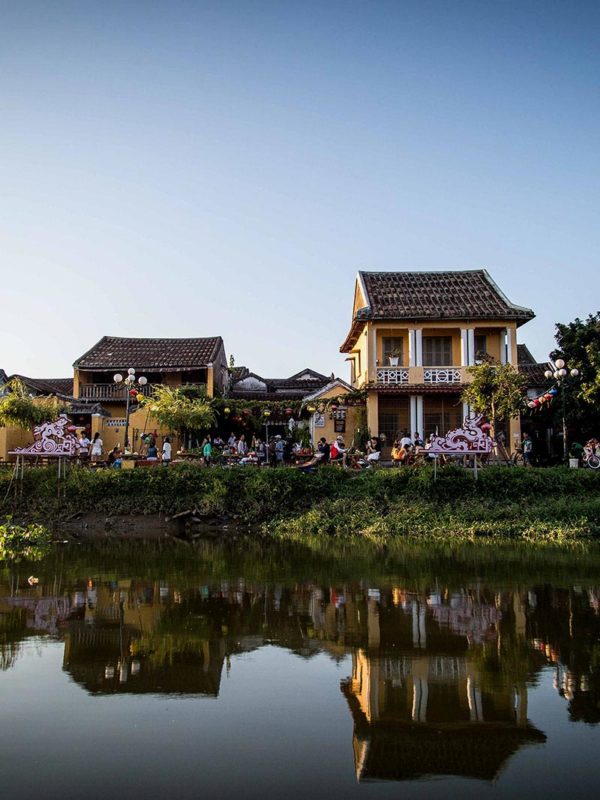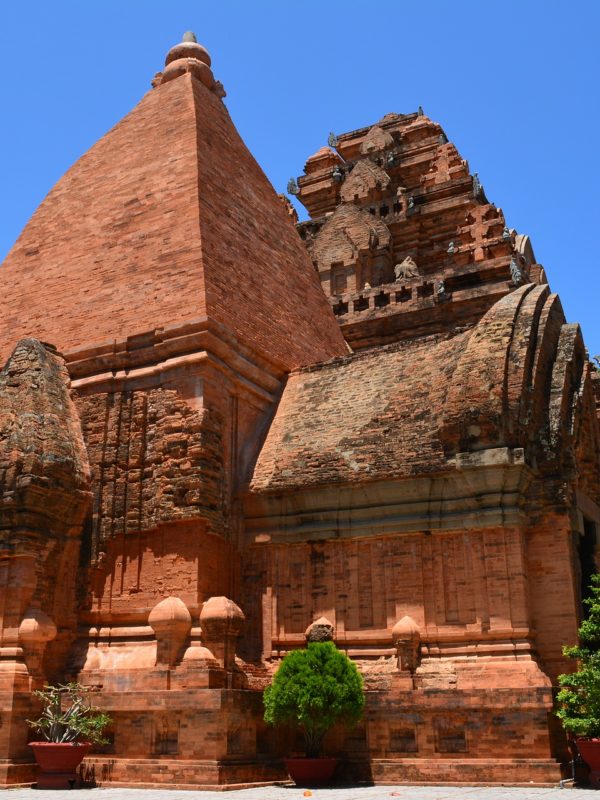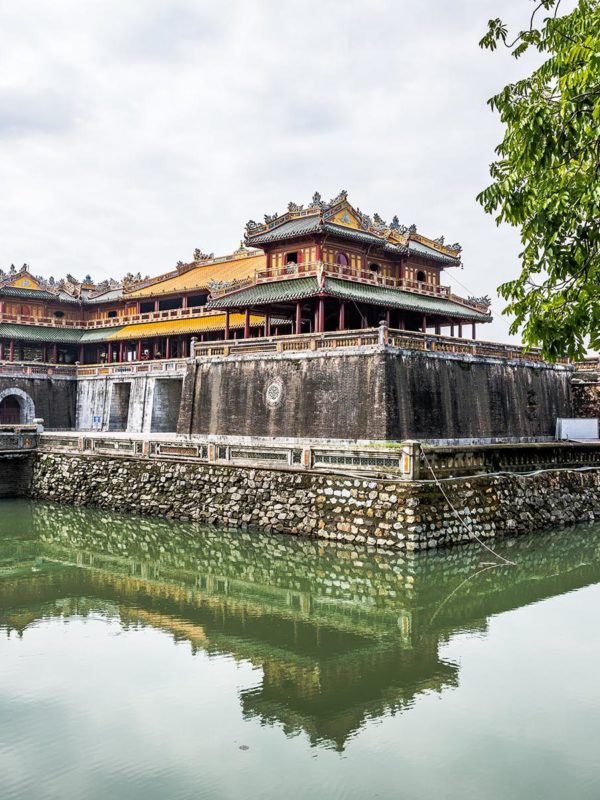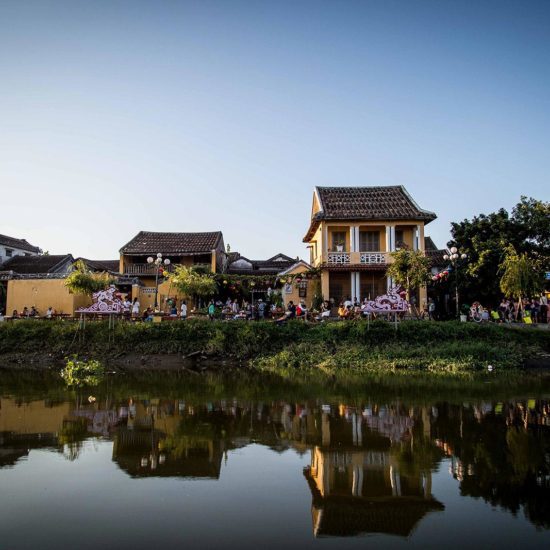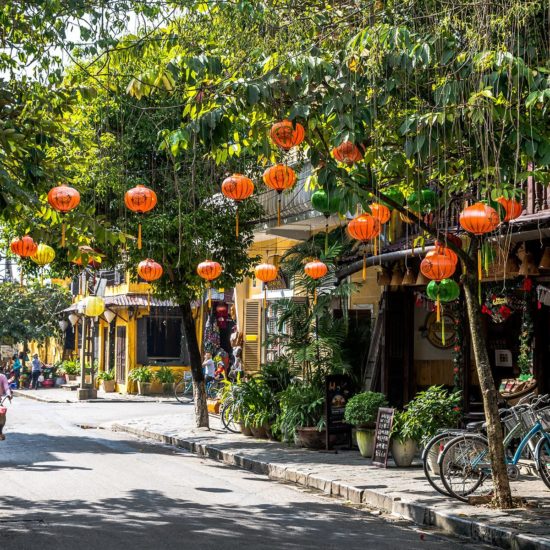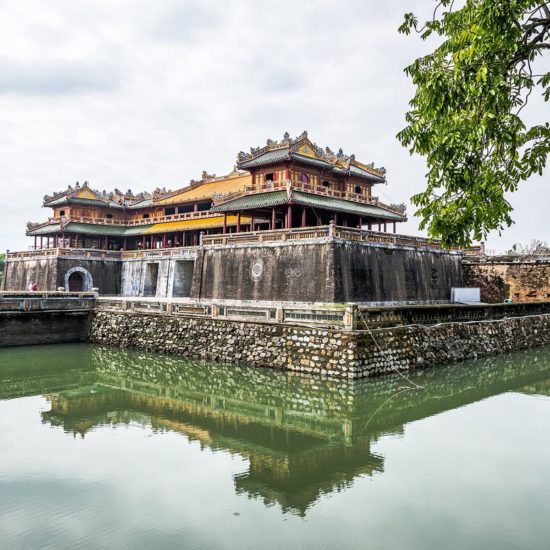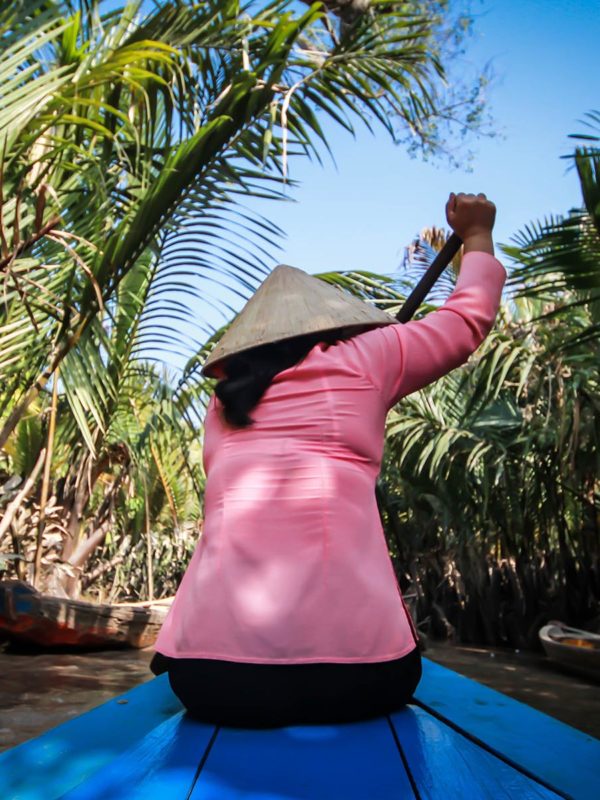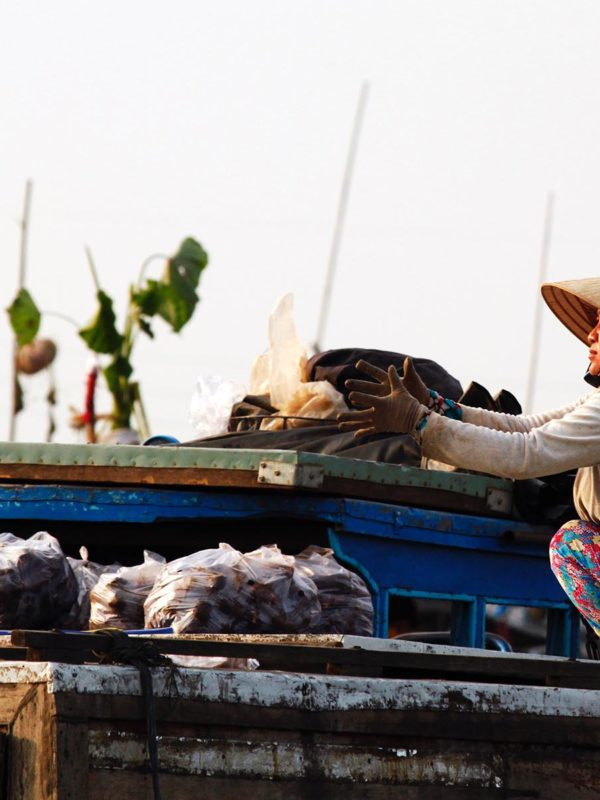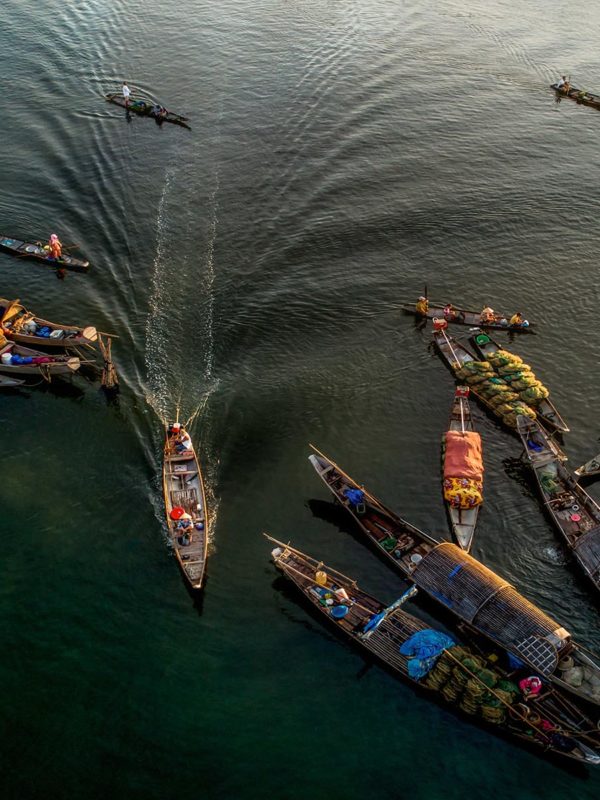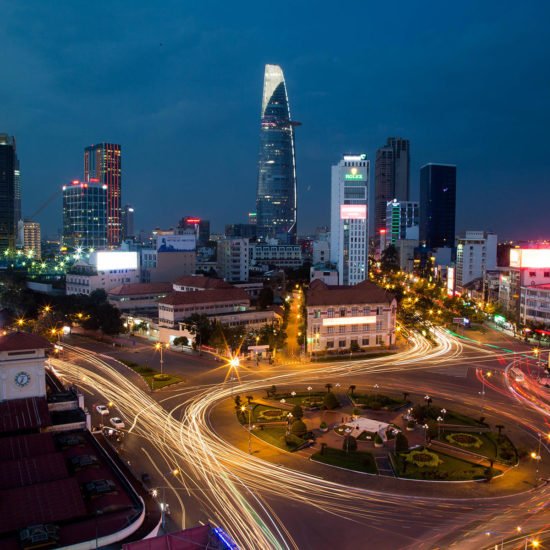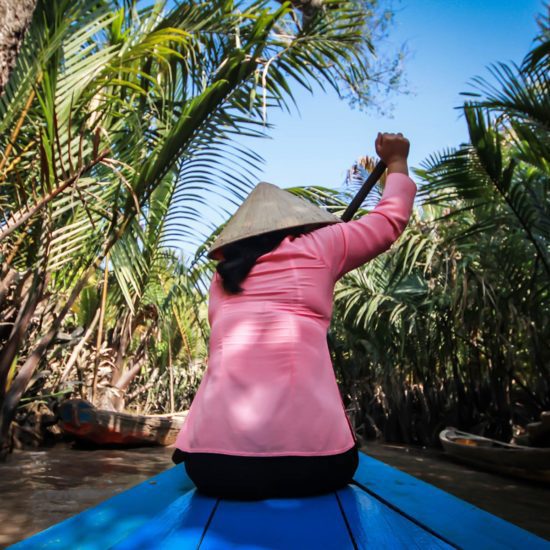Why traveling from North to South ?
The geographical configuration of Vietnam, a narrow country stretching nearly 2,000 km (imagine the distance between Brussels and Seville in southern Spain!), naturally lends itself to a discovery from North to South, or vice versa.
Thus, it is possible to get a more or less in-depth overview depending on the time you spend visiting Vietnam.
We offer you two ways to discover Vietnam: either through a long stay prepared in advance with our team or by customizing your trip, booking tours in each region.
In any case, no matter which region you visit in Vietnam, whether it’s the North, the Central, or the South, rest assured that you will have enriching experiences of great diversity: cultural, in landscapes, gastronomic, or human!
When traveling from North to South ?
Vietnam, being a very long country, each major region has its own climate. The country can be divided into three zones: the North, the Center, and the South. From our perspective, the best time to discover the whole of Vietnam is during the months of March and April. During these two months, you will experience mild weather throughout the territory, thus avoiding the rain and extreme heat.
In Northern Vietnam, the best months are March, April, and the months of September, October, and November. In September and October, it’s the rice harvest season, and you will see the rice fields in their most beautiful state!
The best time to visit Central Vietnam is from January to April, after the rains.
Finally, we recommend visiting Southern Vietnam from December to March.
Our package tours for discovering Vietnam from North to South
Vietnam à la carte
The must-see destination in North Vietnam
Northern Vietnam is full of tourist sites, each more interesting than the last. It can seem difficult to choose what you absolutely must visit and not miss…
Here are 5 destinations that we recommend for a stay in Northern Vietnam. It’s not necessary to see them all – a minimum of 10-12 days would then be required. But this will give you an idea of what to prioritize.
Each destination has its own specificity (rice fields, cruise, karst peaks, etc.) and visiting them all will give you a complete overview of the landscapes and life in Northern Vietnam.
Hanoi, the capital
Located in the Red River Delta, the city of Hanoi is the second most populous in the country after Ho Chi Minh City. It is primarily the political, administrative, and historical capital of Vietnam. In 2010, Vietnam celebrated the 1,000th anniversary of this city, founded by King Ly Thai To in 1010. Since then, Hanoi has often been chosen by successive powers as the capital of Vietnam, with the exception of the imperial period, during which Hue was preferred by the Nguyen dynasty.
Hanoi, therefore, has a very long history, the traces of which can be found in numerous places in the city: the Tran Quoc Pagoda, the oldest in the city; the Temple of Literature, a symbol of Confucian education; the Long Bien Bridge, reminiscent of the French colonial period; and the 36 Corporations Quarter, the commercial heart of the city for hundreds of years.
A visit to the city of Hanoi can be combined with one or several of the craft villages in the vicinity of the capital. This will allow you to discover some objects that make Vietnamese handicrafts famous.
Count on at least 1 to 2 days to visit Hanoi.
Cat Ba island and Lan Ha bay
Cat Ba Island is the largest island of the archipelago of the same name, comprising a total of 367 islands. The island includes a National Park that has remained very wild and has been recognized as a World Biosphere Reserve by UNESCO since 2004. The Park owes this recognition to its rich biodiversity. It features tropical primeval forests, limestone mountains, mangroves, all of which are home to 1,560 plant species, 53 animal families including 160 varieties of birds, 45 reptiles, 21 amphibians, and more than 1,300 species of marine organisms. The island offers numerous activities such as hiking, cycling, and relaxation on its beaches.
Cat Ba Island is the starting point for traditional junk boat cruises in Lan Ha Bay. This less touristy part of Halong Bay extends around the archipelago. It is from the port of Ben Beo, on the south of Cat Ba Island, that the Perfume of Autumn junks depart. Our programs include a unique feature: crossing Cat Ba Island by motorcycle. Immediately after your arrival on the island (most often via a ferry crossing), our local colleagues will be waiting to drive you for an hour to the Ben Beo pier, from where you will embark.
This escapade will let you discover the lush vegetation of the island as well as its coast.
We advise you to stay an extra day on Cat Ba Island after your cruise to hike in the National Park, explore some caves, or enjoy the view from Cannon Fort.
Ninh Binh, Halong bay on land
Ninh Binh is the name of a province located in the Red River Delta. It is also the name of the main city of the province (as is often the case in Vietnam). Around this city, you will find numerous sites to see and visit.
First, you will be happy to see the karst peaks again that you left behind in Halong Bay. Ninh Binh is indeed called “the Terrestrial Halong Bay.” Here, the rocks emerge not from the sea but from the ground. It’s equally impressive and relaxing! Several sites are worth discovering, such as Trang An (a UNESCO World Heritage Site), Tam Coc (where the river is lined with rice paddies), Van Long, and Thung Nham (two less visited sites that also have their charm).
Moreover, you can visit the ancient capital of Vietnam, Hoa Lu, or explore the Buddhist complex of Bai Dinh, as well as cycle around the surrounding countryside and stop at several very ancient pagodas.
A visit to Ninh Binh pairs perfectly with a visit to Halong Bay/Lan Ha. We recommend a stay of at least 3 days and 2 nights to have enough time to appreciate these two beautiful destinations without rushing.
Rice terrace fields in Sapa
Sapa is a town located in Lao Cai Province, near the Chinese border, in Northern Vietnam. It was first developed by the French colonial authorities in the early 20th century to provide a retreat for French officials stationed in Vietnam during the intense heat of the tropical summer. A living place for mountain ethnic groups, especially the Hmong, the town gradually welcomed the Vietnamese (Kinh) population.
Lao Cai Province is home to the highest peaks in Vietnam, including Mount Fansipan, which rises to 3,143 meters. Traveling to Sapa and hiking in the surrounding area means encountering the indigenous peoples, particularly the Hmong population, who have lived in these regions for many years. It also means, of course, marveling at the beauty of the landscapes, notably the famous terraced rice fields, shaped by the men and women of the mountains.
The Dong Van karst plateau in Ha Giang
Long overlooked by tourists, the Ha Giang region is gradually opening up to tourism and revealing its fabulous landscapes! You won’t be disappointed to discover this mountainous region where rocky mountains, valleys, and rivers coexist.
In the northeast of the province, you will especially admire the way the road snakes along the sides of these mountains. During your exploration of this region, where the Hmong population is mainly found, take your time on the road to contemplate the Dong Van limestone plateau, Vietnam’s first geological park, or the Ma Pi Leng Pass, one of the highest mountain passes in Vietnam with an altitude reaching 2,000 meters above sea level.
Our tours in North Vietnam
The must-see destination in Central Vietnam
If Northern Vietnam has its mountains and rice fields, Central Vietnam boasts its charming towns and beaches. We have selected for you 5 destinations not to be missed during your stay in Central Vietnam.
Phong Nha Ke Bang and its amazing caves
Even though the climate is very different between Phong Nha and the rest of the destinations further down in the center of the country, we decide to include this national park in this list. It makes sense from a geographical standpoint: indeed, only 160 kilometers separate Dong Hoi from Hue.
Phong Nha Ke Bang National Park is still not on the classic itineraries, yet… it hosts some of the most beautiful and largest caves in the world, nothing less!
Two caves must be visited: Paradise Cave and Phong Nha Cave, which is explored by small boat. You will be amazed by the beauty of nature’s work!
Hue, the imperial city
Hue is the main city of Thừa Thiên-Huế Province, located in the center of Vietnam. It was in Hue that the Nguyen Dynasty built its Imperial City in the 19th century. The city thrived, renowned for its significant artistic and intellectual reputation, until the arrival of French troops in the 1880s. A large part of the Imperial City was destroyed, and many valuable items such as furniture and manuscripts were stolen or burned. Then came the wars of independence, against the French and the Americans, which further devastated the cultural and historical heritage of Hue…
Fortunately, in recent years, a significant renovation effort has been underway, and it is now possible once again to stroll through an Imperial City that has regained its splendor!
But Hue is not just about its Imperial City! With our tours, you will take the time to walk through the peaceful streets of the city, discover the Thanh Toan Bridge, visit pagodas, sail on the Perfume River, and taste the famous Hue cuisine!
Also not to be forgotten are the tombs of the Emperors on the outskirts of the city, each more impressive than the last. The sites are very well maintained, including large gardens. Not to be missed.
Da Nang and its beaches
Danang is one of the favored destinations for vacationers. Coming from Northern Vietnam, it is the country’s first major seaside resort.
Facing the sea and with its back to the mountains, Danang is one of the 5 most important cities (or “municipalities”) in Vietnam, along with Hanoi, Haiphong, Can Tho, and Ho Chi Minh City. The municipality boasts over 90 kilometers of coastline, stretching from the Hai Van Pass to the Marble Mountains. Along this length, beautiful beaches such as My Khe, Nam O, Xuan Thieu, Thanh Binh, Son Tra, Bac My An, and Non Nuoc have been developed…
A large number of hotels line the beaches, offering you a wide choice of accommodation! Most of these resorts also own a section of the beach, allowing you to relax in peace.
With beach tourism being very important, numerous activities are available in the surrounding area: diving, kite surfing, jet skiing, etc.
Today, the city of Danang has nearly 1 million inhabitants, and the nightlife is rapidly diversifying, much to the delight of passing travelers. A very good choice if you want to combine relaxation and entertainment.
Hoi An and its old city
Once a well-known fishing port frequented by silk merchants from the 15th century, Hoi An has experienced numerous influences, which are reflected in the architecture of its old town. This area has been listed as a UNESCO World Heritage Site since 1999 and features no less than 844 noteworthy buildings. You probably won’t have the time or the patience to visit them all! However, several of them are must-sees: the Japanese Bridge, built in 1593 to connect the Japanese and Chinese quarters of the town; the Tan Ky House, the oldest in Hoi An and the first to be classified as a Historic Monument in 1985; and the Phuc Kien Pagoda, which was once the gathering place for the community from Fujian Province.
Besides these monuments, a stroll through the old town during the day to appreciate the colors of the facades, and at night to enjoy the lights of the lanterns, is not to be missed!
My Son sanctuary
My Son is the main archaeological site of the Cham civilization, which lasted from the 4th to the 13th century. Originating from the Indian subcontinent and Hinduism in terms of culture and spirituality, the Cham built numerous temples in honor of Hindu deities, such as Krishna, Vishnu, and especially Shiva. My Son was the religious heart of this civilization for several centuries.
Our tours in Central Vietnam
The must-see destinations of South Vietnam
Just like in Northern Vietnam, the provinces of Southern Vietnam are home to a large number of ethnic minorities, especially in the Highlands and the Mekong Delta. By visiting the destinations we have listed below, you will not only see superb landscapes but also meet local populations, making Vietnam such a rich mosaic.
Buon Ma Thuot in the Highlands
The city was founded by the French in 1904 and developed as an important commercial crossroads. The Vietnamese population only started populating this region after reunification. Buon Ma Thuot and its surroundings are primarily inhabited by ethnic minorities, different from those living in the mountains of Northern Vietnam. Thus, you can meet the Ede, M’Nong, Jarai, Rhade, and other peoples.
In addition to the opportunity to immerse yourself in different cultures, you can taste the best coffee in Vietnam, quite simply! Indeed, it was in this region that coffee was introduced during the French colonial period (around 1870). Thanks to particularly well-suited soil, the crops have developed, and today the robusta coffee from Dak Lak province is known internationally. So, watch out for addiction!
Ho Chi Minh City, the economic capital
Several centuries ago, Ho Chi Minh City was just a fishing village belonging to the Khmer Empire. In the 17th century, the city welcomed Vietnamese and Chinese populations and was named Saigon, after the river that runs through it.
Renamed Ho Chi Minh City after the country’s reunification in 1975, it is today the most populous city in Vietnam with over 9 million inhabitants. Over time, the city has gradually become denser, benefiting from the proximity of the Mekong Delta. Today, it is driving the country’s growth and its leaders have the ambition to make it a leading metropolis in Asia, akin to the city-state of Singapore.
Why is it interesting to stop there? Precisely to feel and see this dynamism at work, to evoke changes, and to compare the old with the modern! Our guides will take you through the different districts: Vietnamese, Chinese, and French. Some iconic buildings you won’t want to miss include the Notre Dame Cathedral of Saigon, built in 1880; the Reunification Palace, built in 1868 and renovated in 1955; and the Ben Thanh Market dating back to 1860. These are just a few of the interesting sites to discover.
Ho Chi Minh is also the gateway for stays in the Mekong Delta or excursions to surrounding provinces like Cu Chi.
Vinh Long, the quiet Mekong delta
The first destination we recommend in the Mekong Delta is Vinh Long, whose main town is a small port on the Mekong River.
The rest of the province is almost exclusively dedicated to rice cultivation: 90% of the arable land consists of rice fields! In addition, you can find some cultivation of beans and sweet potatoes. There are also numerous fruit trees: pineapple, jackfruit, bananas, oranges, lemons, etc.
Vinh Long invites you to a peaceful time: you can cycle around to explore the surrounding countryside. You can also take sampans to navigate the arroyos and discover some islands like An Binh and Binh Hoa Phuoc. There are also very beautiful communal houses and pagodas (the population of the region is predominantly Kinh – Vietnamese).
Chau Doc and life on water
Chau Doc is a medium-sized city (about 150,000 inhabitants) in the An Giang province, located on the border between Vietnam and Cambodia. This city has been part of Vietnam since the 17th century and today is home to Vietnamese, as well as Khmer and Cham people (ethnic minorities). Along with Vinh Long, it is one of the best places to discover the authentic life of the region… But that doesn’t mean there’s nothing to do, quite the contrary!
Visiting Chau Doc and its region will first be an opportunity to discover Cham culture. The countryside is dotted with Cham villages, where you can explore the culture and ancestral crafts of this ethnic group. You can also visit the Chau Doc floating market, more authentic than those of Cai Rang and Phong Dien. Next, you can climb to the top of Sam Mountain, the highest in the Mekong Delta, peaking at… 230 meters in altitude! Yes, it won’t be a trek, but from the summit, you’ll have a superb view of the surrounding rice fields. Finally, about 20km from Chau Doc is the Tra Su cajeput forest. This forest has become a nature reserve through which a river flows. We advise taking a sampan ride on this “green path,” so named because it’s covered with water hyacinths. A very relaxing ride!
Our tours in South Vietnam
